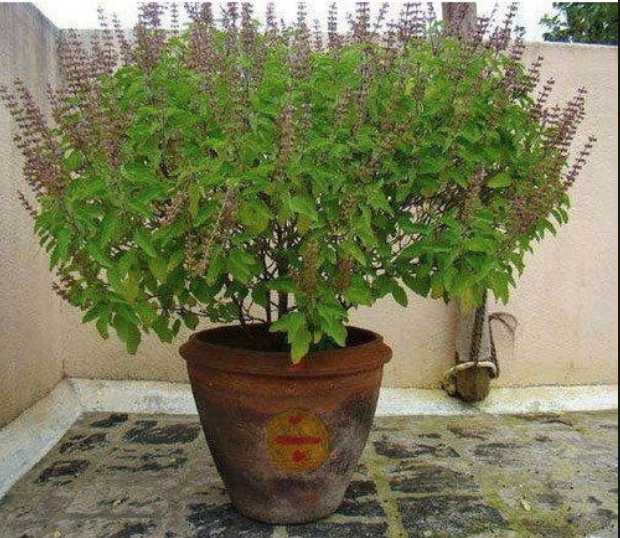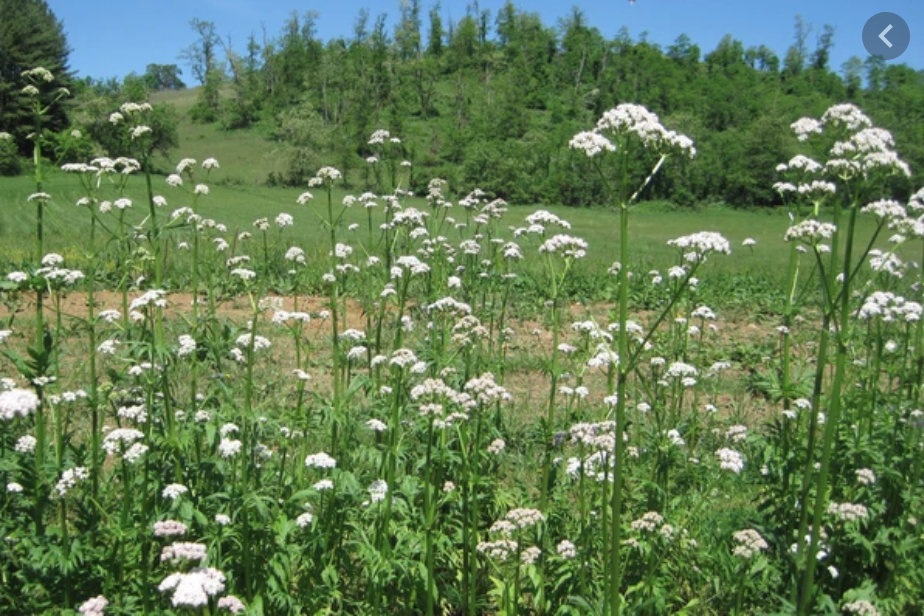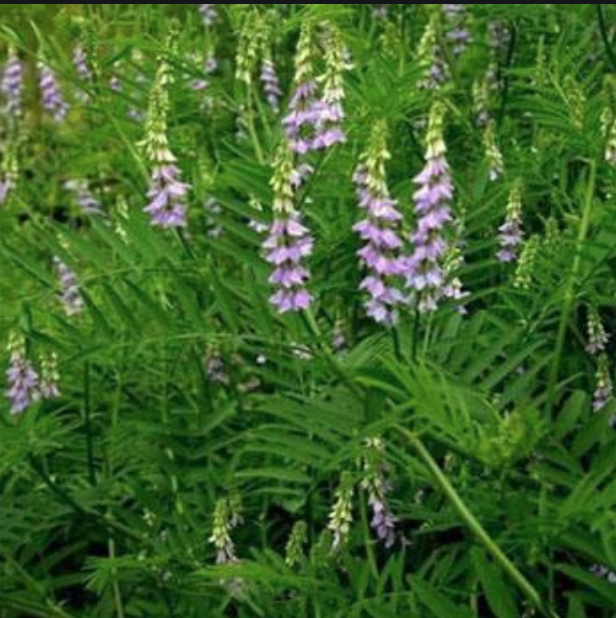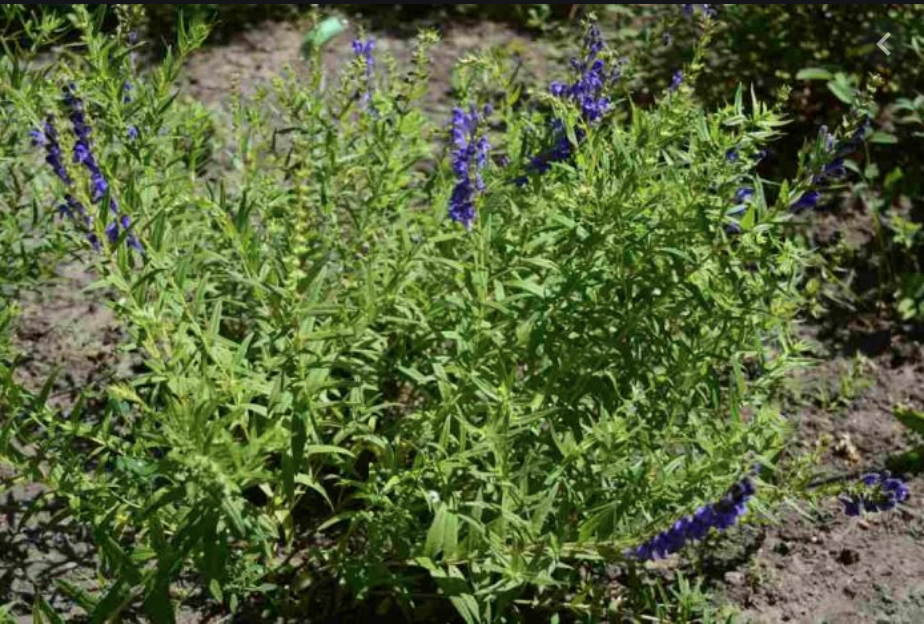De~stress tonic

Congratulations on making the choice to Grow your health with our Garden Apothecary De~stress Tonic.
In this pack you’ll find 5 different herb varieties to grow in your garden or on your balcony and Moss Agate crystals to add a little extra magic to your plants.
Lets start with each herb and how to grow them, what they look like and how to harvest, then we’ll move onto some recipes to get the most benefit from your medicinal herbs.
GROW
TULSI – HOLY BASIL
| Method: | Raise seedlings |
| Sowing Depth: | 1mm |
| When: | Spring and early summer |
| Germination: | 8-14 days @ 21-23°C |
| Hardiness / Life Cycle: | Half hardy Annual |
| Plant Spacing: | 40cm |
| Plant Height: | 30-60cm |
| Position: | Full sun, moist well drained soil |
| Days to Maturity/Flowering: | 100-110 days |
Part Used – Leaves

Harvest the leaves and flowers often, and pinch back blossoms to encourage more vigorous growth and dry the leaves, store in an air tight container.

ASHWAGANDHA
| Method: | Raise seedlings |
| Sowing Depth: | 7mm |
| When: | Spring and summer |
| Germination: | 7-14 days @ 18-22°C |
| Hardiness / Life Cycle: | Hardy Perennial |
| Plant Spacing: | 60cm |
| Plant Height: | 140cm |
| Position: | Part or full sun, moist soil |
| Days to Maturity/Flowering: | 150 – 160 days |
In traditional ashwagandha propagation, the roots are harvested after the fruit have completely matured. In colder climates, the whole plant can be potted up and overwintered indoors. If they’re kept at cool indoor temperatures, around 60 degrees, growth will slow over winter and they’ll be ready to resume once spring arrives. Carefully dig each root and gently dust off the soil. Give them a quick wash, cut them into 7cm lengths and then dry them in a well-ventilated area with good air flow.
VALERIAN
| Method: | Raise seedlings |
| Sowing Depth: | 4mm |
| When: | Spring and summer |
| Germination: | 7-14 days @ 18-22°C |
| Hardiness / Life Cycle: | Hardy Perennial |
| Plant Spacing: | 60cm |
| Plant Height: | 120cm |
| Position: | Part or full sun, moist soil |
| Days to Maturity/Flowering: | 110 days flower (500 days root harvest) |

You can use all parts of Valerian plant, the flowers for picking and put in a vase or dry for smudge sticks, leaves used fresh or dry for tea and the roots for medicine. Wait a full year before starting to harvest roots and leaves for medicinal use. Harvest mature root systems in the Autumn for drying. Allow the plant to go a few days without water before you harvest so that the natural compounds are more potent.

LICORICE
| Method: | Sow direct |
| Sowing Depth: | 10mm |
| When: | Spring or Summer |
| Germination: | 15-20 days @ 20-30°C |
| Hardiness / Life Cycle: | Hardy Perennial |
| Plant Spacing: | 200cm |
| Plant Height: | 150cm |
| Position: | Full or part sun, moist well drained soil |
| Days to Maturity/Flowering: | 730+ days |
You can harvest licorice root once your plant is two years old and it’s best done in the autumn after the growing season is complete. Dig up the plant with a sharp spade and remove some of the roots with clean scissors or secateurs. Dry the roots for a few months before using them to make a delicious, healthy tea
SKULLCAP
| Method: | Raise seedlings – Stratify {See Below} |
| Sowing Depth: | 4mm |
| When: | Spring and summer |
| Germination: | 45 days @ 18-22°C |
| Hardiness / Life Cycle: | Hardy Perennial |
| Plant Spacing: | 60cm |
| Plant Height: | 30 cm |
| Position: | Part or full sun, moist soil |
| Days to Maturity/Flowering: | 110 days flower (500 days root harvest) |

Skullcap seeds need stratification – Stratify the seeds in the refrigerator for one week. Many skullcap varieties require a period of cold to enable germination. Place seeds on a moist paper towel, put the paper towel in a ziplock bag, and place the bag in the refrigerator. Check on the seeds in the refrigerator periodically during the stratification period to ensure none grow mouldy or dry out too much. Remove the seeds from the refrigerator after the stratification period and plant them in a sterilised seed mix to germinate. Water the seeds, and keep the soil moist but not soggy or waterlogged. Keep the newly planted seeds in a warm place until they sprout. Harvest – harvest the plants while they are flowering—the peak of their herbal power—then cut and dry the leaves and stems to use as herbal medicine.
HARVEST
TULSI
Part Used – Leaves
How – You can begin to harvest tulsi once the plant reaches about 30cm in height. Pinch back the growing tips to help encourage a bushy plant habit, which will increase yields. Tulsi plants should be ready for harvest about 40 days after germination and do best with sparse periodic harvests. You can dry the leaves as you harvest them
ASHWAGANDHA
Part Used – Extracts or powder from the plant’s root or leaves are used to treat a variety of conditions
How – Ashwagandha is ready to harvest in 150 – 180 days when flower and berries start to form and leaves begins to dry out.
Harvest ashwagandha roots by digging carefully using a small tool. Be careful not to damage the plant when digging up and make sure soil has some moisture while doing this.
After harvesting, roots, and barriers are separated from the plant. Roots are washed and cleaned and cut into small pieces of 7-10 cm and dried in sun or shade.
Berries are also separated from the plant, dried, and crushed to take out seeds.
VALERIAN
Part Used – The roots and rhizome are the most common used parts of the plant. The root is good at treating nervous tension, especially anxiety and insomnia. The root also strengthens the heart and can sometimes reduce high blood pressure. It encourages healing in wounds and ulcers and is effective topically for muscle cramps.
How – I like to harvest valerian on warm Autumn day, after the first frost. The parts used include the root and the rhizomes. Dig plants that are at least two years old in the spring or fall. Be careful not to damage the roots as you dig. Cut up roots into small 3 – 5 cm pieces and dry in sun or shade.
LICORICE
Part Used – Roots
How – Harvest the thickest horizontal roots but leave the deep tap root and thinner horizontal roots to grow on. Replant or bring it under cover for winter in very cold areas. Chewed fresh, the root tastes sweet and a little salty. The sweetness intensifies the more you chew and release the sap. Dry roots as per valerian.
SKULLCAP
Part Used – skullcap flowers and leaves either fresh or dried
How – Once your skullcap is in bloom, you can harvest the plant. I like to cut the whole plant down about 3 – 4 cm above the ground. You can use skullcap flowers and leaves either fresh or dried. I hang my skullcap up in a dark, dry location ( closets or pantry) to dry completely.
USE
TULSI {HOLY BASIL}
According to studies, tulsi tea helps in maintaining normal levels of cortisol hormone in the body that is known as the stress hormone. It lowers the levels of cortisol, leaving you stress-free. In fact, it is known to subside various symptoms of depression, which may include anxiety.
TULSI TEA
INGREDIENTS
1 cup water
1-2 tablespoons dried tulsi (or a handful of fresh tulsi leaves and flowers)
- Bring the water to a boil. Remove from the heat and pour over the tulsi in a heat-safe container.
- Allow the tea to steep, covered, for 15-20 minutes.
- Strain tulsi from tea and enjoy daily.
ASWAGANDHA
Ashwagandha is best known for its stress-lowering effects. The medicinal herb appears to help lower levels of cortisol, a hormone produced by your adrenal glands in response to stress. More specifically, daily doses of 125 mg to 5 grams for 1–3 months
‘MOON MILK’
Ideally sipped daily before bedtime, moon milk contains a blend of adaptogens and spices to help inspire a blissful night’s rest.
Adaptogens are herbs and plants that have been used for centuries in Ayurvedic medicine, one of the oldest holistic healing systems in the world. These adaptogens provide therapeutic benefits and help the human body deal with physical and mental stressors.
One of the most therapeutic adaptogenic herbs is ashwagandha. Ashwagandha has positive benefits on the endocrine, cardiopulmonary, and central nervous systems, with powerful anti-inflammatory, anti-stress, and antioxidant effects.
INGREDIENTS
1 cup milk of choice (whole, almond, coconut, etc.)
1 tsp. ground ashwagandha root
1/2 tsp. ground cinnamon
1/4 tsp. ground ginger
a pinch of ground nutmeg
1 tsp. coconut oil
1 tsp. honey or maple syrup
METHOD
- Bring the milk to a low simmer, but don’t let it boil.
- Once the milk is hot, whisk in the ashwagandha, cinnamon, ginger, and nutmeg. Gently simmer for 5 minutes.
- Stir in the coconut oil, and pour the moon milk into a cup. Sweeten with honey or maple syrup, if desired.
VALERIAN
Valerian is most commonly used for sleep disorders, especially the inability to sleep (insomnia). Valerian is also used orally for anxiety and psychological stress.
HOME MADE SLEEP POTION:
PASSIONFLOWER AND VALERIAN TINCTURE
INGREDIENTS
50g passionflower, dried
50g valerian root, dried
500ml vodka
METHOD
- To prepare the herbal tincture, add the dried herbs to a sterilised glass jar and pour over the vodka. Label and date the jar. Fasten the lid tightly and store somewhere away from direct sunlight.
- Leave this to infuse for about six weeks. You may need to top up the alcohol level as time goes by. Notice how the colour changes.
- After the infusion process, decant the tincture and wring through a fine mesh bag to press out the precious mixture from the dried roots and herb.
- Funnel the tincture into dark amber glass dropper bottles.
Dosage:
Best taken 45 minutes before bedtime to enable the herbs to take effect. 10 drops in a little water
LICORICE
Taking a moment out during your day, and sipping on licorice root tea might just be the healthy ritual you need. It also helps with stress due as it acts as an adaptogen and can stimulate the adrenal gland, which promotes a healthy level of cortisol in the body.
INGREDIENTS
1 cup cut and sifted licorice root
1/2 cup cinnamon chips
1/2 cup dried orange peel
1/2 cup cut and sifted ashwagandha root
1/2 cup cut and sifted astragalus root
1/2 cup cut and sifted valerian root
1/2 cup dried chamomile flowers
2 tbsp dried cloves
METHOD
Stir to combine thoroughly. Store in a glass jar with a tightly fitted lid.
To prepare: Add 1 tbsp per cup of water and simmer over low heat for 30-45 minutes. Alternately, you could pour hot water over the herbs, cover for 15 minutes and then strain. You will get more flavour and extract more from the herbs by simmering for 30 minutes.
SKULLCAP
Skullcap is a tonic for our nervous system. It can calm anxiety and irritability and also lift our spirits.
Skullcap can also be taken as a tea or infusion, but rarely do you want to get up in the middle of the night and make some tea. Having a tincture on your bedside table works really well for a quick tonic to help you get back to sleep if you are restless or stressing about something that happened in your day.
Skullcap Tincture
INGREDIENTS
you will need a 500ml jar, ½ cup of dried skullcap leaves, and 100-proof vodka to fill your jar. Start with a small jar, since you don’t yet know how effective this tincture will be for you. Start with a small amount and experiment with it. If it works well, you can make a larger amount the next time.
METHOD
- Fill the jar ½ way with dried skullcap leaves.
- Pour 100-proof vodka over the leaves until the jar is full.
- Stir and cap your tincture in progress.
- Label the jar “Skullcap (Scutellaria lateriflora) tincture,” with the date 6 weeks from now to decant it. Or just put today’s date, and that will help remind you when to decant.
- Open and stir your skullcap tincture every day for the first week. Allow the skullcap tincture to sit and infuse for 5 more weeks. Shaking the jar or stirring it every few days is a great idea. Keep the tincture out on the counter so you’ll be reminded to do so. However, make sure it is kept out of direct sunlight. Then… Strain the skullcap tincture into cheesecloth that is set into a strainer. Then, compost the leaves.
- You can clean out the jar you were brewing it in, and pour your finished tincture in the same jar for storage. Store out of direct sunlight. LABEL your jar “Skullcap (Scutellaria lateriflora) dried in 50% alc.” Pour some into a tincture bottle for ease of use. LABEL the little bottle if that’s what you use. You can also use any bottle or jar and administer with a teaspoon.
DIRECTIONS take a dropperful of tincture 3 or 4 times a day – at mealtimes and just before bed. It’s a great idea to put it in a little warm water when you are taking it. However, some people just put it directly in their mouths. The tincture will last for several years, so when the stress eases, simply tuck the bottle away in your medicine cabinet until you need to pull it out again.
****DISCLAIMER***As with all medicines consult your health professional before taking anything, caution when pregnant and not to be given to children. The information contained in these pages are not to be considered as health advice.
